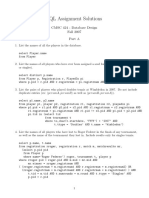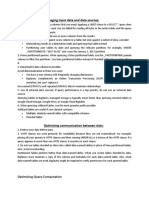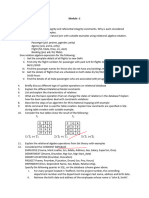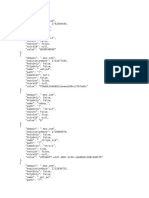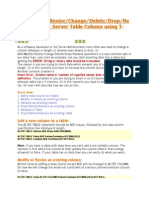0% found this document useful (0 votes)
95 views11 pagesComparison of SQL
The document compares SQL, Spark SQL, and PySpark across various features such as language type, execution environment, data handling, use cases, and performance. SQL is suited for traditional databases and smaller datasets, while Spark SQL excels in big data processing in distributed environments, and PySpark provides a Pythonic interface for leveraging Spark's capabilities. It also includes numerous practical examples demonstrating SQL and PySpark operations for data manipulation and analysis.
Uploaded by
sn070727Copyright
© © All Rights Reserved
We take content rights seriously. If you suspect this is your content, claim it here.
Available Formats
Download as DOCX, PDF, TXT or read online on Scribd
0% found this document useful (0 votes)
95 views11 pagesComparison of SQL
The document compares SQL, Spark SQL, and PySpark across various features such as language type, execution environment, data handling, use cases, and performance. SQL is suited for traditional databases and smaller datasets, while Spark SQL excels in big data processing in distributed environments, and PySpark provides a Pythonic interface for leveraging Spark's capabilities. It also includes numerous practical examples demonstrating SQL and PySpark operations for data manipulation and analysis.
Uploaded by
sn070727Copyright
© © All Rights Reserved
We take content rights seriously. If you suspect this is your content, claim it here.
Available Formats
Download as DOCX, PDF, TXT or read online on Scribd
/ 11




















